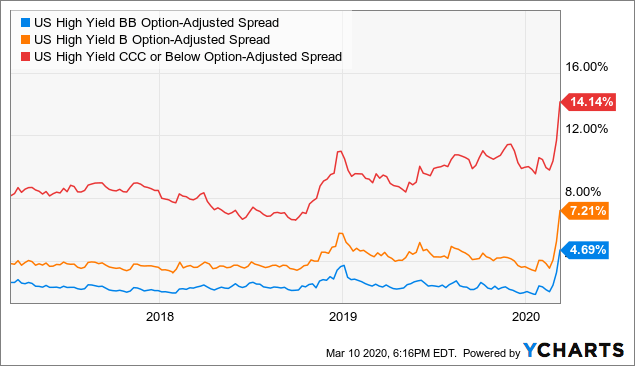
We'll discuss in this article why trading margin is dangerous and how we can minimize the risk. Margin trading requires only a small capital investment. There are no transaction costs or fees. Margin uses are free of any deposit or fees. But it is important that you choose the right level of leverage to match your skill. This article will provide more information about different types of leverage.
Margin trading is a risky strategy
Margin trading has both its advantages and drawbacks. The forex market is always in flux. Currency values can be affected by geopolitical tensions and central bank policy changes. There are different margin requirements depending on the region. However, most popular currency pairs have a minimum of 3.3%. To place a $50,000 buy order, a trader would need $3,300. Because margin requirements are determined by your broker, it is important to understand these rules before you trade.

It requires a small amount of capital
Leverage (also known as forex margin) is a financial instrument that allows traders to place trades with small amounts of capital. This type of trading allows for you to take bigger positions with a lesser amount of capital. It is important to know this feature when trading Forex, especially if it is your first time. Leverage is a strategy that allows Forex traders to take more risks and make greater profits.
There is no transaction or charge.
Forex margin can be described as a transaction fee or fee. Margin refers to a percentage of your account equity you need to deposit before you can have an open position. The size of the trade will determine the amount you need to deposit. Although this deposit is not a fee or transaction charge, it is required for trading activity.
It is not a deposit
Traders often have misconceptions about Forex margin. Essentially, this is a good faith deposit required to open a new position. This amount is often communicated in a percentage of the notional value. It is borrowed from the broker. Traders should limit the amount they deposit to their account. Stock dealers trading margins caused the 1929 stock market crash. Although the 1929 stock market crash is not an ideal example of how to handle Forex margins properly, it is an essential part of forex trading.

It is not borrowed money
Forex margin is not a loanable money. However, it's important to understand the risks involved. There are different margin requirements for each currency pair. The best rule of thumb is that you use the lowest interest rate for the currency pair in which you are investing. Even if the interest rate is the lowest, the carry payments will be lower than you expected. There are exceptions. Margin borrowing might not be an option for experienced traders with high risk tolerance.
FAQ
What is a mutual fund?
Mutual funds are pools of money invested in securities. They provide diversification so that all types of investments are represented in the pool. This reduces the risk.
Mutual funds are managed by professional managers who look after the fund's investment decisions. Some funds also allow investors to manage their own portfolios.
Most people choose mutual funds over individual stocks because they are easier to understand and less risky.
What Is a Stock Exchange?
A stock exchange allows companies to sell shares of the company. This allows investors to buy into the company. The market determines the price of a share. The market usually determines the price of the share based on what people will pay for it.
Companies can also raise capital from investors through the stock exchange. Investors invest in companies to support their growth. They do this by buying shares in the company. Companies use their funds to fund projects and expand their business.
Stock exchanges can offer many types of shares. Others are known as ordinary shares. These are the most common type of shares. Ordinary shares can be traded on the open markets. Prices of shares are determined based on supply and demande.
Other types of shares include preferred shares and debt securities. When dividends become due, preferred shares will be given preference over other shares. If a company issues bonds, they must repay them.
Is stock a security that can be traded?
Stock is an investment vehicle that allows you to buy company shares to make money. This is done via a brokerage firm where you purchase stocks and bonds.
You can also directly invest in individual stocks, or mutual funds. There are more mutual fund options than you might think.
The difference between these two options is how you make your money. Direct investment is where you receive income from dividends, while stock trading allows you to trade stocks and bonds for profit.
Both of these cases are a purchase of ownership in a business. You become a shareholder when you purchase a share of a company and you receive dividends based upon how much it earns.
Stock trading allows you to either short-sell or borrow stock in the hope that its price will drop below your cost. Or you can hold on to the stock long-term, hoping it increases in value.
There are three types: put, call, and exchange-traded. You can buy or sell stock at a specific price and within a certain time frame with call and put options. ETFs are similar to mutual funds, except that they track a group of stocks and not individual securities.
Stock trading is very popular as it allows investors to take part in the company's growth without being involved with day-to-day operations.
Stock trading is not easy. It requires careful planning and research. But it can yield great returns. To pursue this career, you will need to be familiar with the basics in finance, accounting, economics, and other financial concepts.
How can I select a reliable investment company?
Look for one that charges competitive fees, offers high-quality management and has a diverse portfolio. The type of security that is held in your account usually determines the fee. Some companies have no charges for holding cash. Others charge a flat fee each year, regardless how much you deposit. Others may charge a percentage or your entire assets.
You also need to know their performance history. If a company has a poor track record, it may not be the right fit for your needs. Avoid companies that have low net asset valuation (NAV) or high volatility NAVs.
Finally, it is important to review their investment philosophy. To achieve higher returns, an investment firm should be willing and able to take risks. If they are not willing to take on risks, they might not be able achieve your expectations.
Statistics
- US resident who opens a new IBKR Pro individual or joint account receives a 0.25% rate reduction on margin loans. (nerdwallet.com)
- Individuals with very limited financial experience are either terrified by horror stories of average investors losing 50% of their portfolio value or are beguiled by "hot tips" that bear the promise of huge rewards but seldom pay off. (investopedia.com)
- Our focus on Main Street investors reflects the fact that American households own $38 trillion worth of equities, more than 59 percent of the U.S. equity market either directly or indirectly through mutual funds, retirement accounts, and other investments. (sec.gov)
- The S&P 500 has grown about 10.5% per year since its establishment in the 1920s. (investopedia.com)
External Links
How To
How to Trade in Stock Market
Stock trading is a process of buying and selling stocks, bonds, commodities, currencies, derivatives, etc. The word "trading" comes from the French term traiteur (someone who buys and sells). Traders sell and buy securities to make profit. It is one of the oldest forms of financial investment.
There are many ways you can invest in the stock exchange. There are three types that you can invest in the stock market: active, passive, or hybrid. Passive investors are passive investors and watch their investments grow. Actively traded investor look for profitable companies and try to profit from them. Hybrids combine the best of both approaches.
Passive investing is done through index funds that track broad indices like the S&P 500 or Dow Jones Industrial Average, etc. This method is popular as it offers diversification and minimizes risk. You can just relax and let your investments do the work.
Active investing means picking specific companies and analysing their performance. Active investors will analyze things like earnings growth rates, return on equity and debt ratios. They also consider cash flow, book, dividend payouts, management teams, share price history, as well as the potential for future growth. They will then decide whether or no to buy shares in the company. If they feel the company is undervalued they will purchase shares in the hope that the price rises. If they feel the company is undervalued, they'll wait for the price to drop before buying stock.
Hybrid investing blends elements of both active and passive investing. You might choose a fund that tracks multiple stocks but also wish to pick several companies. In this instance, you might put part of your portfolio in passively managed funds and part in active managed funds.